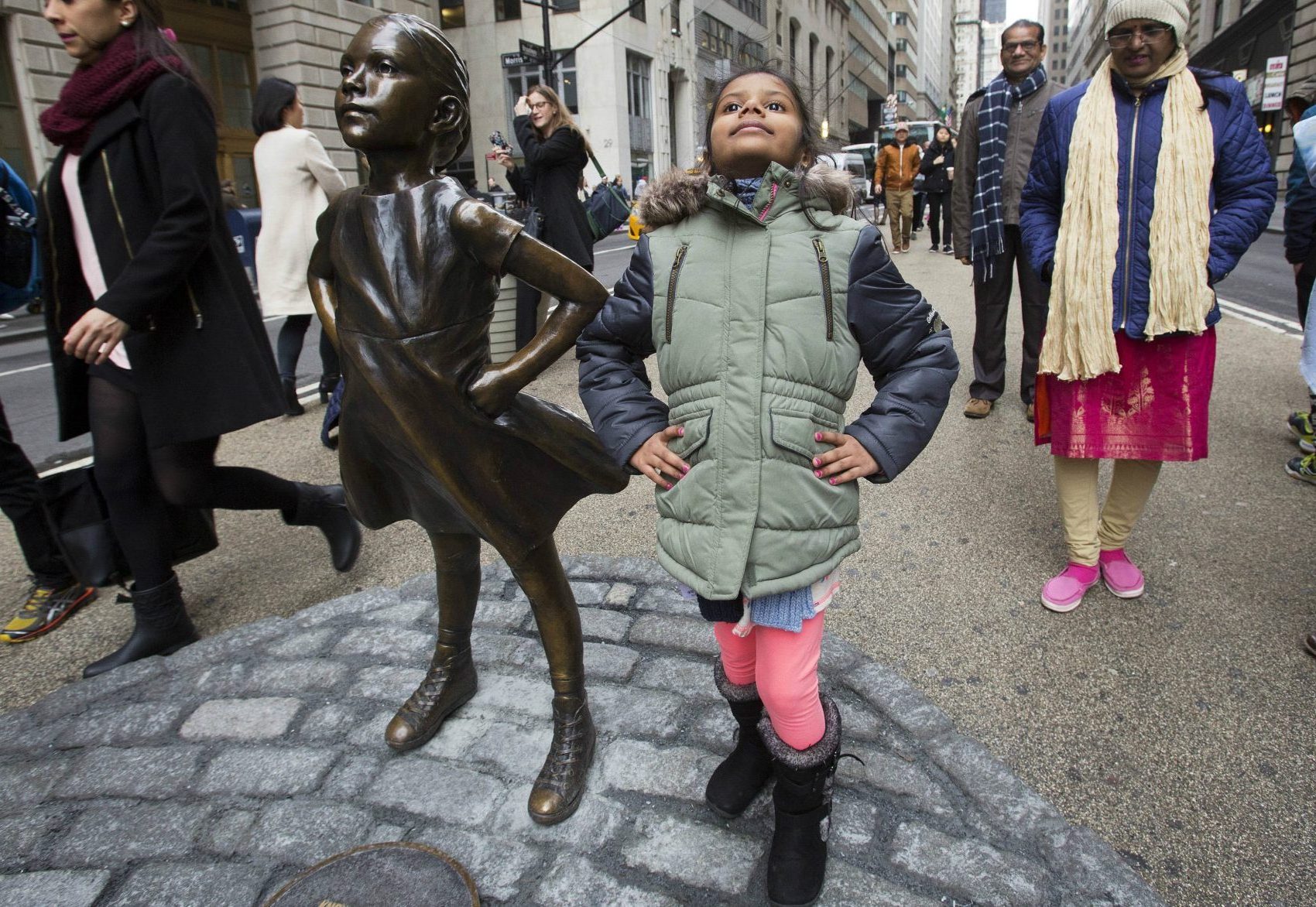Advertisement
COMMENTARY
How To Create More Female Business Executives: Start When They're Children

I read a multitude of studies for my job, and they often seem paradoxical: First, diversity is good for business — it leads to a more innovative workforce and higher profits; but second, most industries have failed to achieve that diversity in their leadership. As women progress in their careers, the number advancing into higher-level leadership roles decreases: women make up 46 percent of professional entry-level jobs; 37 percent of managers; 29 percent of vice presidents; and only 19 percent of C-suite positions.
Research from Bain & Company and LinkedIn suggests why. Their 2016 study, which surveyed 8,400 U.S.-based women and men with a college degree, revealed that women not only enter the workforce with less confidence and lower aspirations for top management than men but that the gap persists. At midcareer, 56 percent of women aspired to a senior leadership position compared with 64 percent of men. And just 57 percent of women said they had the confidence to reach their goal, compared to 66 percent of men.
Fixing this problem will take more than a day, or even a month, of awareness — although International Women’s Day (March 8) and Women’s History Month (March) are important to celebrate women and revive the conversation about the disparities between women and men. This discussion needs to be ongoing, and it needs to start earlier in women’s lives. A woman’s view of leadership begins to take shape early in childhood, starting with the values she learns and her exposure to leadership skills and positive role models. Can we reach these women while they’re still girls? I think we can, and we should.
A new study found that 6-year-old girls are less likely than boys to think members of their own gender can be "really, really smart" -- a change from age 5, when they’re just as likely as boys to think their own gender can be brilliant.
On International Women’s Day earlier this month, the creation of the "Fearless Girl" statue standing up to Wall Street’s famous "Charging Bull" made a strong statement about the need for women on the boards of U.S. companies. But just days later, a man’s lewd act to the statue was captured and spread on social media, reinforcing the need, now more than ever, to teach girls confidence and leadership skills early on so that when they graduate from elementary school, high school and college, they’ll have confidence that sustains them throughout their careers.
We know that the confidence and leadership disparity between boys and girls starts early. A new study found that 6-year-old girls are less likely than boys to think members of their own gender can be "really, really smart" -- a change from age 5, when they’re just as likely as boys to think their own gender can be brilliant. As they grow, many girls are also taught lessons that undermine leadership aspirations. Eighty-six percent of the 3,000 professional and college-age women surveyed in a recent KPMG study were taught to be “nice to others” when they were younger and to do well in school. But in this same group, less than 50 percent were taught fundamental leadership lessons. The goal should be to increase this to 100 percent.
Advertisement
Women who are encouraged to be leaders in childhood are more likely to aspire to be leaders as adults. This difference in aspiration is dramatic. In the same KPMG study, 74 percent of women who were encouraged as children to lead aspired to senior leadership roles later on, while only 48 percent of those who didn't receive childhood encouragement felt similarly. This issue is crucial as Secretary of Education Betsy DeVos takes office, and the future of public school funding and the types of initiatives funded are brought into question.
In the ... study, 74 percent of women who were encouraged as children to lead aspired to senior leadership roles later on, while only 48 percent of those who didn't receive childhood encouragement felt similarly.
It seems clear, then, that leadership training offered earlier will lead to more women in business leadership roles and improved workplace diversity. Some innovative educational institutions, nonprofits and companies recognize this and are creating high school leadership training and internships programs to empower women earlier in their lives. Examples include the Growing Leaders Program, John Hancock’s MLK summer scholars and MA Conference for Women Young Women’s Program. GE is also reaching younger audiences through its Developing Futures, which extends STEM initiatives in K-12 to reach more districts and students, and Brilliant Career Lab, a mobile lab in the Boston Public Schools created to inspire students to explore STEM careers.
Leadership training should continue through college as women strengthen their self-identity and choose a career path. For example, Bentley University, where I work, launched a four-year Women’s Leadership Program to enhance leadership skills, address gender inequality, and provide corporate connections. Other innovative examples include programs offered by the Forté Foundation and the Posse Foundation.
It’s up to all of us to raise, teach and empower girls to have the confidence to believe that they can become leaders in whatever field they choose. Hillary Clinton said to all the girls in America, “ ... never doubt that you are valuable and powerful and deserving of chance and opportunity in the world to pursue and achieve your own dreams.” So today and every day, we need to consider what a future with girls and women who believe they can be whoever and whatever they want would look like. We — as schools, corporations and nonprofits — need to make sure that girls and young women have the confidence to lead.
